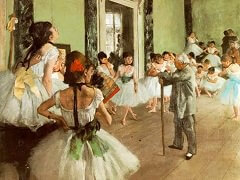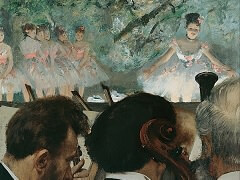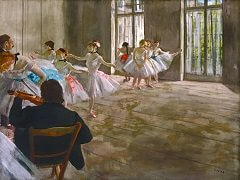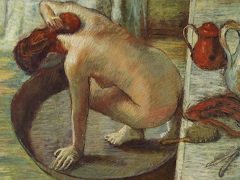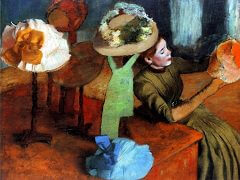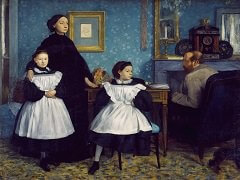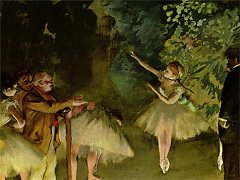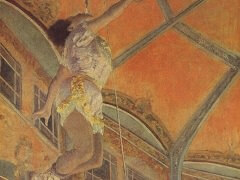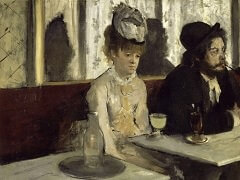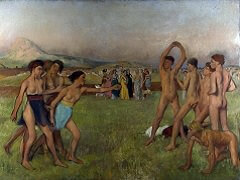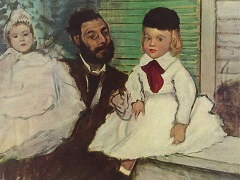Dancers at the Barre, 1880-1900 by Edgar Degas
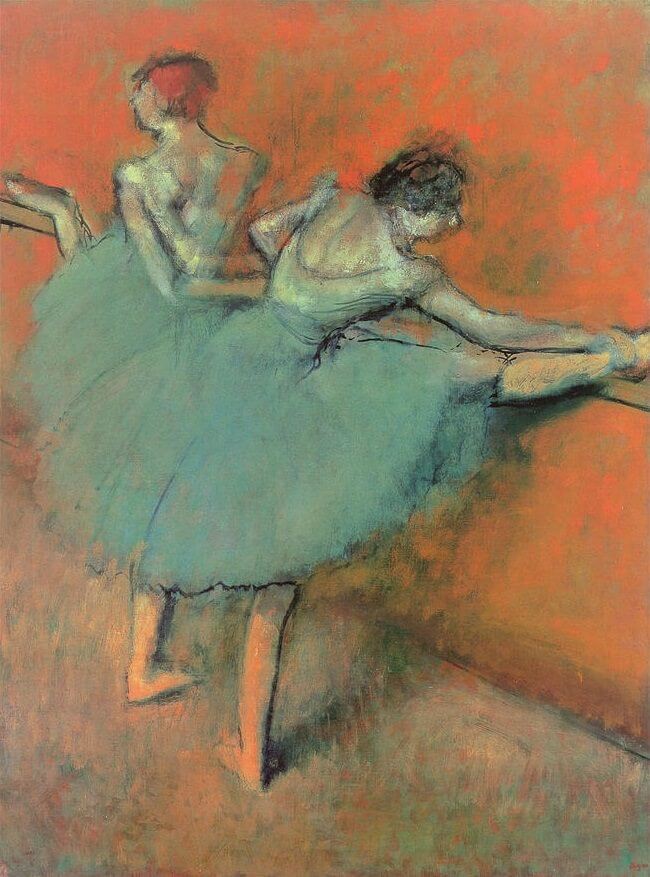
During his lifetime Degas depicted many scenes from the ballet. He began studying dancers in the 1870s and, along with female nudes, they were to become a principal motif in his work.
Degas frequently visited the back stage and public areas of the Opera building in Paris where the ballet was performed. However, he rarely actually made his studies there, preferring instead to draw in his studio from posed models or memory. Although Degas tended to depict scenes from backstage and the wings of the theatre, through his studies, pastels, paintings and sculptures, he created a detailed picture of both the glamour of the performance and the more sordid reality of the dancers' backstage life.
Degas's process mirrored the rote and repetition, point and counterpoint of ballet - he repeated himself obsessively, tracing and refining compositions over decades, and reproducing the same subjects from multiple perspectives in a range of media. He often produced studies for individual dancers or small groups then combined their figures in new compositions. Occasionally, he stripped away costume to deepen his understanding of anatomy and posture. Dancers at the Barre is reunited with full-scale pastel and charcoal sketches of its dancers shown individually and t ogether, nude and clothed, for the first time since they were in the artist's possession.



